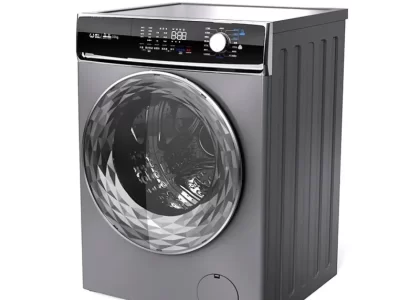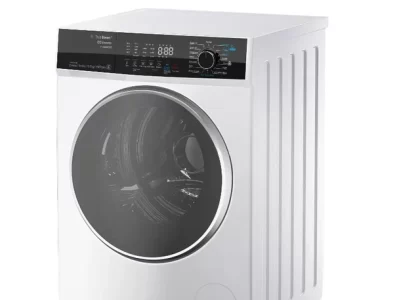 Introduction:
Introduction:
When your washing machine fails to spin, it can be frustrating and inconvenient. This malfunction can prevent proper cleaning and leave your clothes soggy and wet. However, understanding the reasons behind a washing machine not spinning can help you identify and resolve the issue. In this comprehensive guide, we will explore the various causes of a non-spinning washing machine and provide possible solutions. By troubleshooting and addressing these issues, you can get your washing machine back in proper working order and ensure clean and properly spun laundry.
Here are some common types:
There are several types of washing machines available on the market. Here are some common types:
Top-Loading Washing Machine:
This type of washing machine has a vertically oriented drum and a lid on the top. It is popular for its ease of use, as clothes can be loaded and unloaded from the top without bending down. Top-loading machines come in both traditional agitator models and newer impeller models.
Front-Loading Washing Machine:
Front-loading machines have a horizontally oriented drum and a door on the front. They are generally more energy-efficient, use less water, and offer better cleaning performance compared to top-loading machines. They are also stackable, allowing for space-saving installations.
High-Efficiency (HE) Washing Machine:
HE washing machines are designed to use less water and energy compared to traditional models. Both top-loading and front-loading machines have HE versions available. HE machines typically require high-efficiency detergent to produce optimal cleaning results.
Compact Washing Machine:
Compact washing machines are smaller in size, making them suitable for apartments, small homes, or limited laundry spaces. They often have a smaller capacity but provide convenience for those with space constraints.
Washer-Dryer Combo:
Washer-dryer combos combine both washing and drying functions in one machine, eliminating the need for a separate dryer. They are especially useful in smaller spaces where separate washer and dryer units may not fit.
Portable Washing Machine:
Portable washing machines are compact and lightweight, allowing for easy transportation and hookup to a faucet or sink. They are suitable for camping trips, RVs, small apartments, or situations where a traditional washing machine may not be available.
These are some of the common types of washing machines available, each offering different features, capacities, energy efficiency, and convenience. It’s important to consider your specific needs, space limitations, and budget when selecting the right type of washing machine for your household.
 Power and Control Issues
Power and Control Issues
Power Supply:
First, check if the washing machine is receiving power by ensuring it is properly plugged in and the circuit breaker is not tripped.
Inspect the power cord for any damage or loose connections.
Door Interlock:
Many washing machines have a door interlock mechanism that prevents the machine from spinning if the door is not securely closed.
Inspect and ensure that the door is properly closed and that the interlock mechanism is functioning correctly.
Control Panel and Settings:
Confirm that all settings and options on the control panel are correctly set for the desired wash cycle.
Select the appropriate spin speed and check if any special options, such as child lock, are activated.
Load and Balance Issues
Overloading:
Overloading the washing machine with excessive laundry can cause it to become unbalanced and prevent proper spinning.
Reduce the load and distribute the garments more evenly inside the drum.
Uneven Distribution of Laundry:
Ensure that the laundry is evenly distributed inside the drum to prevent an imbalance during the spin cycle.
Large or heavy items should be balanced with smaller items to distribute the weight evenly.
 Mechanical and Functional Problems
Mechanical and Functional Problems
Belt Issues:
A broken or worn-out drive belt can prevent the washing machine from spinning.
Inspect the belt for any signs of damage, such as cracks or excessive looseness, and replace if necessary.
Motor Problems:
A malfunctioning motor can inhibit the spinning action of the washing machine.
Check for any unusual noises or lack of motor function, and consider contacting a professional technician for assessment and repair.
Lid Switch or Door Lock:
If the lid switch or door lock mechanism is faulty or damaged, it can prevent the washing machine from spinning.
Test the switch or lock for proper functionality and replace if needed.
Control Board or Timer:
Issues with the control board or timer can disrupt the spinning cycle.
Professional assistance may be required to diagnose and resolve problems related to these components.
Drainage and Pumping Problems
Clogged Drainage System:
A clogged drainage system can prevent the washing machine from draining water properly, leading to spinning issues.
Check the drain hose, filter, and pump for any obstructions and clear them as necessary.
Faulty Pump:
A malfunctioning pump can hinder proper drainage and cause spinning problems.
Inspect the pump for any blockages or signs of damage, and replace it if necessary.
 Here are some options:
Here are some options:
If your washing machine is not spinning and you’ve already tried basic troubleshooting steps without success, it may be time to consider repairing it. Here are some options:
DIY Repair:
If you have some knowledge and experience with washing machine repairs, you can attempt to fix it yourself. Like resetting your washing machine. You can refer to the manufacturer’s manual or online resources for guidance. However, keep in mind that washing machines involve electrical components, so it’s important to follow proper safety precautions and avoid any risks.
Professional Repair Service:
If you’re not comfortable or confident about fixing the washing machine yourself, it’s best to seek professional help. Contact a reputable appliance repair service or the manufacturer’s customer support to schedule a service call. They will have trained technicians who can diagnose and repair the issue correctly.
Warranty Coverage:
If your washing machine is still under warranty, check the terms and conditions to see if the issue is covered. If so, contact the manufacturer or retailer for warranty service. They may either repair or replace the machine at no cost to you.
Replacement Parts:
If the repair requires replacing specific parts, you can purchase them from authorized dealers or appliance repair stores. Be sure to get the right parts that match your washing machine’s make and model.
Consider Replacement:
If the cost of repairs is prohibitive or your washing machine is old and showing multiple issues, it may be more cost-effective to replace it with a new one. Upgrading to a newer, energy-efficient model can also provide additional benefits.
Remember that proper maintenance and regular cleaning of your washing machine can help prevent some common issues, including spinning problems. It’s also important to follow the manufacturer’s guidelines regarding load capacity, detergent usage, and maintenance procedures to help prolong the lifespan of the machine.
 Conclusion:
Conclusion:
A washing machine not spinning can be a frustrating issue, but by understanding the possible causes and solutions outlined in this comprehensive guide, you can troubleshoot and resolve the problem effectively. Start by checking the power supply, door interlock, and control panel settings. Then, examine load and balance issues, ensuring that the laundry is distributed evenly inside the drum. If mechanical or functional problems arise, inspect the belt, motor, lid switch, or control board.
Lastly, address drainage and pumping problems by clearing any obstructions from the system. Remember, if you are uncertain or uncomfortable with performing any repairs, it is best to seek assistance from a professional technician. By addressing the issues preventing your washing machine from spinning, you can ensure your laundry is properly cleaned and spun, leading to efficient and effective washing machine operation.




